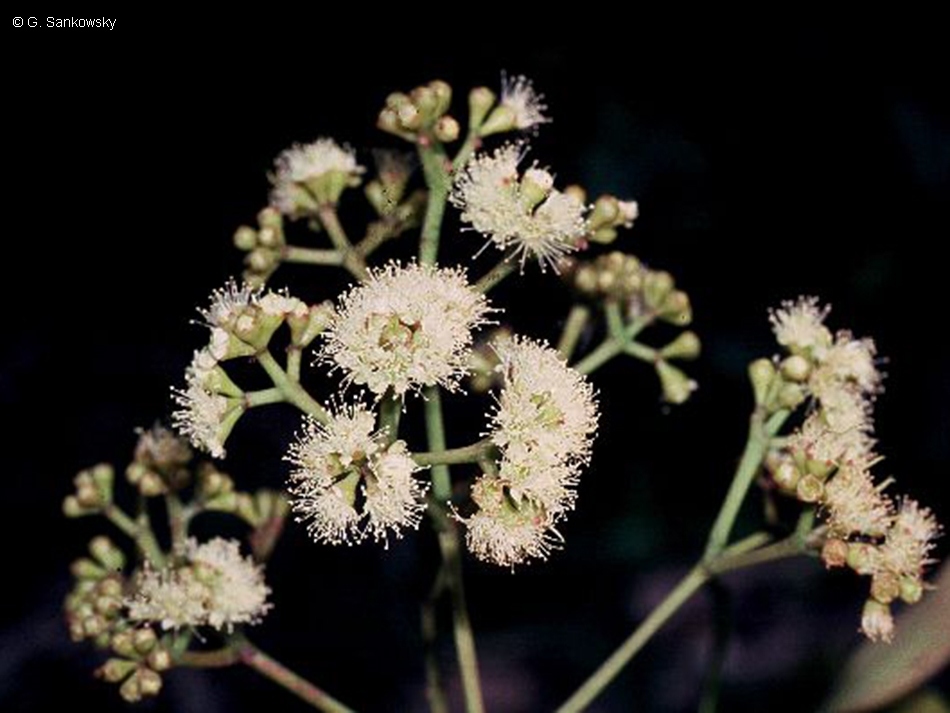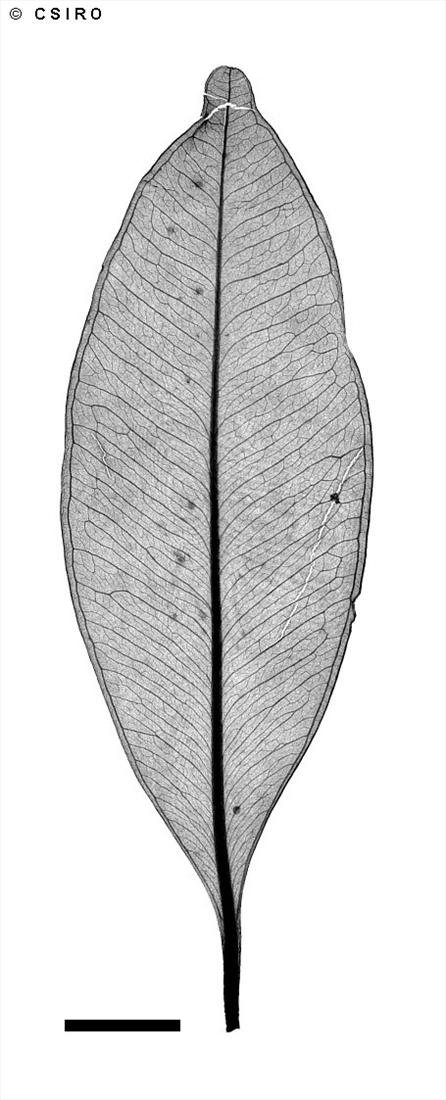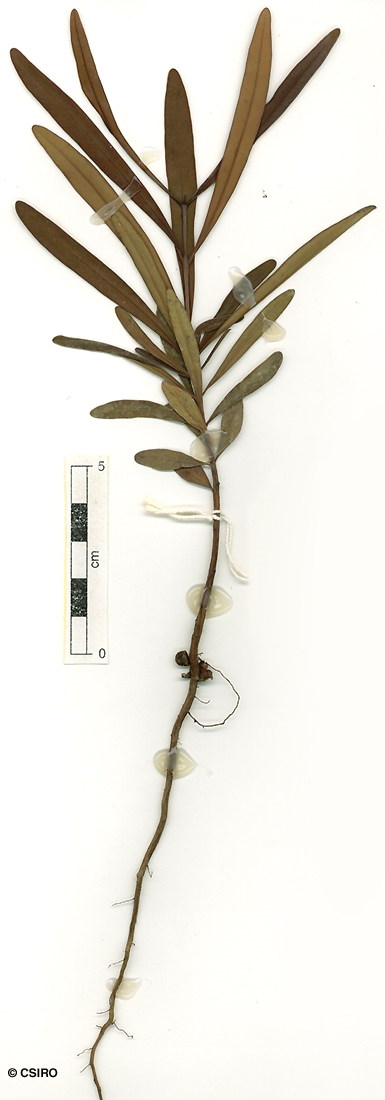Australian Tropical Rainforest Plants - Online edition
Syzygium banksii (Britten & S.Moore ex S.Moore) B.Hyland





Hyland, B.P.M. (1983) Australian Journal of Botany Supplementary Series 9: 58.
Satinash, Joseph's; Joseph's Satinash
Often poorly formed and multistemmed but under favourable conditions grows into a reasonable tree. Bark coarsely flaky particularly on larger trees. Blaze deep, dark red on large trees.
Leaf blades about 8-12 x 2-4 cm, petioles about 0.3-1.3 cm long. Oil dots visible with a lens if not visible to the naked eye.
Bracts caducous, absent at anthesis. Calyx tube (hypanthium) gradually tapering into the pedicel, calyx tube (hypanthium) + pedicel about 4.5-6.5 mm long, calyx tube (hypanthium) about 2.5-5 mm diam., calyx lobes acute, incurved and hooked at the apex, about 0.4-0.5 mm long. Petals orbicular, about 1.5 mm diam., oil dots scarce, usually fewer than ten per petal, concentrated towards the base. Outer staminal filaments about 4-5 mm long, anthers +/- reniform, broader than long, about 0.6 x 0.7 mm, opening in divergent slits which are almost contiguous at the apex, gland terminal. Ovules about 5 or 6 per locule, placentas axile, central, ovules horizontal to radiating. Style about 6-7 mm long, approximating the stamens.
Fruits ellipsoid, about 12-15 x 8-11 mm, calyx lobes persistent, small and inconspicuous, about 0.2-0.4 mm long, pericarp fleshy. Seed solitary, about 9 x 6 mm, testa weakly adhering to the pericarp but free from the superposed, uniformly textured cotyledons. Radicle lateral, cotyledonary stipules present, difficult to distinguish.
Generally a poorly formed uncommon tree (though locally abundant) of no commercial value. Could be of value in sand stabilization.
Wood specific gravity 1.01. Hyland (1983).





